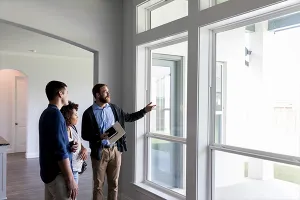
Your clients are relying on you for more than just facilitating the real estate transaction—they want insight and guidance on the real estate trends that will define the market moving forward. Build-to-rent is one fast-growing trend that must be on your radar: residential communities purpose-built for long-term rental occupancy instead of individual ownership.
Why BTR Is on the Rise
In an era of shifting housing markets and economic uncertainty, BTR offers a flexible housing solution for individuals and families who, because of financial constraints or lifestyle preferences, are not ready for homeownership. Millennials priced out of homeownership, Gen Zers just entering the housing market, and retirees looking to downsize and reduce maintenance responsibilities may all take an interest in BTR projects.
A 2025 report from Fixr estimates the number of BTR home starts nationwide has increased 134% since 2019. Communities often feature professionally managed single-family homes with modern amenities, private yards, garages—and no long-term mortgage commitment. These properties have appealed to young families, remote workers, and relocating professionals seeking privacy and flexibility. BTR construction has been most prevalent in the south and southwest—cities like Phoenix, Dallas, Atlanta and Charlotte—but investor interest is growing nationally.
The Upsides for Investors and Developers
For investors, BTR offers a stable and predictable income stream with potential for long-term appreciation, and an opportunity to diversify. For developers, building multiple units within a single community offers economies of scale: lower construction and operational costs, shared infrastructure, and streamlined property management.
Be aware of development incentives available in your state. In Medford, Ore., for example, the Housing Opportunity Fund (HOF) provides direct funding to housing developers to reduce development costs, while the Multiple Unit Property Tax Exemption (MUPTE) offers a tax exemption for up to 10 years to eligible housing developments. The city of Austin, Texas, has several programs to incentivize builders to develop new housing projects, including the SMART Housing program, which waives permitting, capital recovery, and construction inspection fees for qualifying developments.
These programs can save developers thousands to millions of dollars in upfront costs, making these types of projects much more financially feasible. Saving money on building expenses for rental housing has a positive impact on the rental market as developers won’t need to set higher rental rates to recoup costs—which means more competitive rental rates and a greater return on investment.
How You Can Profit from the BTR Trend
While the model differs from traditional home sales, real estate professionals can benefit from working with clients on BTR transactions in several ways:
- Rental commissions: It depends on the developer, builder or property management company, but independent agents may receive referral fees for bringing in qualified tenants, leasing commissions for filling units in new BTR communities, or—in rare cases—recurring commissions for lease renewals or ongoing management referrals. Some developers, like AMH in Phoenix, actively recruit real estate professionals to help fill newly constructed communities quickly and offer competitive compensation structures.
- New revenue streams: If traditional home sales dominate your income, BTR offers diversification. You can partner with investor clients to acquire or develop multiple BTR properties, advise homeowners on converting new builds into rental income properties, and establish relationships with developers for early access to leasing opportunities or new inventory—all of which create new revenue opportunities for your business.
- Repeat business: Investor clients involved in BTR communities often lead to long-term relationships. Helping them enter the BTR market opens the door for future acquisitions, leasing referrals and even exit strategies when the time comes.
Potential Downsides—and How to Navigate Them
While the upsides are clear, real estate agents should consider a few challenges and limitations that can accompany BTR transactions:
- Lower or one-time commissions: Rental commissions are typically lower than sales commissions (often a flat fee or portion of one month’s rent), and they can be one-time payments unless a renewal bonus or referral fee is offered. However, these commissions can add up over time and serve as lead generation for future sales or investor relationships.
- Developer restrictions: Some developers only work with preferred broker networks or require agents to register renter clients early on in the process. In some cases, if a tenant finds a unit directly through the owner, landlord or listing site, the agent may not receive a commission. Be proactive in building relationships with onsite developers, owners, landlords or property management companies.
- Limited access and control: BTR communities may or may be listed on your local MLS. Onsite staff often handle availability, leasing and showings, which can limit your involvement (and influence). Staying in contact with onsite staff and asking for real-time vacancy updates can help maintain a competitive edge—as can building developer relationships for knowledge on new BTR communities as they’re being built.
- Not the right fit for all clients: For clients focused on building equity, even a shorter-term BTR may not align with their goals. Zoning and regulation challenges, longer ROI timelines, higher upfront costs and saturation risks in certain markets can deter some investors from BTR.
Stay Ahead of the Curve
All that said, BTR is actively reshaping many real estate markets. Developers are beginning to expand into more creative territory as interest in BTR grows. Investors have converted old hotels, schools, factories and other commercial or industrial buildings into BTR communities. One of our property management clients is currently converting vacant elementary schools into rental housing—a cost-effective model with natural common areas, existing infrastructure and ample parking. To stay ahead of the curve:
- Diversify your client base to cultivate relationships with developers and investors. As you grow this segment of your client base, understanding the nuances of trends like BTR will be essential to effectively advise them.
- Stay informed about the financial models, the regulatory environment, marketing strategies and other intricacies of BTR communities. Learning how to assess the value of converted and BTR properties and how they differ from traditional residential sales will help you stand out as an expert. Understanding tenant relations is always a plus in the multifamily housing space.
- Expand your network to collaborate with architects, urban planners, property managers and others who can help you provide comprehensive services and recommendations to your clients involved in BTR developments.
BTR is expected to grow and adapt over time, becoming an integral part of both the urban and suburban housing landscape in many markets across the country. And you can have a pivotal role in the evolving landscape.
Real estate agents are uniquely positioned to bridge the gap between investors, developers and renters. By understanding the intricacies that differentiate the BTR model from traditional sales and developing strategic partnerships, you can profit, advise with confidence, and help shape the future of housing in your market.









